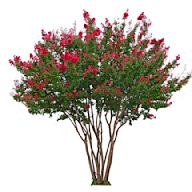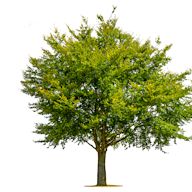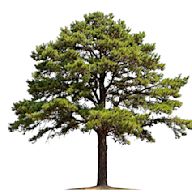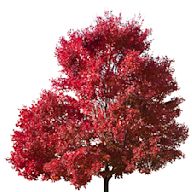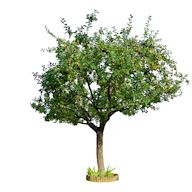Search results
News about Dollar Tree, Chris Jericho, 99 Cents Only
News about Texas Trees Foundation, bark beetles, Charleston
May 10, 2024 · Tree, woody plant that regularly renews its growth. Most plants classified as trees have a single self-supporting trunk containing woody tissues, and in most species the trunk produces secondary limbs, called branches. There are few organisms as important as trees for maintaining Earth’s ecology.
In botany, a tree is a perennial plant with an elongated stem, or trunk, usually supporting branches and leaves. In some usages, the definition of a tree may be narrower, including only woody plants with secondary growth, plants that are usable as lumber or plants above a specified height.
- American Basswood (Tilia americana) An attractive shade tree, the American basswood can grow as tall at 60 to 80 feet with a round and lush crown made up of heart-shaped leaves.
- American Elm (Ulmus americana) Although its numbers have been impacted by Dutch elm disease, the American elm can still be found with its tall, arching branches creating a shady place to escape the hot summer sun.
- Common Hackberry (Celtis occidentalis) Also known as the northern hackberry and American hackberry, the common hackberry is easily recognizable from a distance by its light gray, warty bark on massive trunks.
- Eastern White Pine (Pinus strobus) Found and adored throughout the Great Lakes and Midwest states, Eastern white pines are impressive to look at and soft to the touch.
Tree - Structure, Growth, Adaptation: Generations of terrestrial plants recycling nutrients and energy into the stratum led to the contribution of developing rich organic soil suitable for large shrubs and herbs. Trees are organized into three major organs: roots, stems, and leaves.
- Trees help clean our air. Global forests removed about one-third of fossil fuel emissions annually from 1990 to 2007. share U.S. Forest Service, 2011. Trees remove pollution from the atmosphere, improving air quality and human health.
- Trees contribute to our health. A study of 10 cities found community forests save an average of one life each year. In New York City, trees save an average of eight lives every year.
- Trees provide us with oxygen. One large tree can provide a day’s supply of oxygen for up to four people. share North Carolina State University. More than 20% of the world’s oxygen is produced in the Amazon Rainforest.
- Trees help clean our drinking water. Forested watersheds provide quality drinking water to more than 180 million Americans. share U.S. Forest Service, 2013.
People also ask
How tall does a tree have to be to be considered a tree?
What are the different parts of a tree?
How do trees help the environment?
How big can trees get?
arborday.org offers detailed information on dozens of commonly planted landscape trees that grow throughout the United States. Here you will find information on height and spread, soil and sun requirements, leaves and fruit, history, wildlife habitat, and more.
Learn. Trees. Anatomy of a tree. This information is courtesy the Arbor Day Foundation. A: The outer bark is the tree's protection from the outside world. Continually renewed from within, it helps keep out moisture in the rain, and prevents the tree from losing moisture when the air is dry.



